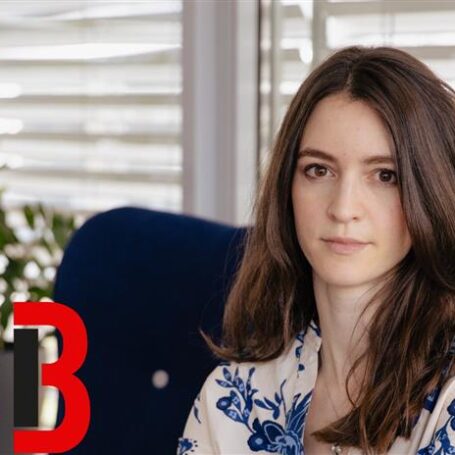Students as consumers – the impact of individual choice
The higher education White Paper published this week by the UK government (‘Students at the heart of the system’) will, according to the Department for Business, Innovation and Skills, achieve a number of astonishing improvements and transformations. Many of its aims are laudable and it would be marvellous if the higher education system (in England) can be improved still further. How high should our hopes be?
The most basic questions are whether the problem facing HE has been identified accurately and, if so, whether the best solutions are being proposed? The premise of the White Paper is that the development of HE should be driven by the student as an individual consumer in the context of open competition between institutions, resulting in greater diversity of provision. But student satisfaction is already very high, and there is already intense competition both within and between universities.
This culture has been well established through the QAA, RAE/REF, the National Student Survey and numerous league tables. Universities now compete to attract students through the content and quality of their courses, their ‘value added’, peer review of their teaching and research, provision of attractive accommodation and facilities, and the student experience. From the student’s point of view their purchasing power is currently clearly and simply defined by their qualifications and nothing else. Most people agree that this is fair and appropriate. It is not easy to discern how the (government-constrained) new elements of competition will bring about any substantive improvements in the quality of student experience, or any greater fairness or appropriateness of their opportunities. On the other hand, there are reasons to worry that the proposed changes risk destabilising a tried, trusted, and successful structure.
The White Paper provides various case studies of activities that illustrate how its principles might work for some students in some very specific contexts, but there is no clear analysis of, evidence for, or a willingness to speculate on exactly how the new arrangements will provide a net improvement for all students.
So, what is on offer? First, everything for students will be better, including more standardised information before they apply to university, better teaching when they arrive, more feedback on their work, and better preparation for the job market. But what evidence is there that there are significant weaknesses in any o f these areas at present? Are there more jobs for graduates to go to even if universities try to up their game? Do the majority of universities provide inadequate information, offer poor teaching, and leave their students unemployable? It seems unlikely that these are significant weaknesses because otherwise universities would not have managed to expand their student numbers to the present level. Manifestly, for a long period of time now, large numbers of young people have chosen to be educated past the age of 18 and chosen to go to universities where they will share this experience with others who are similarly able (determined by qualifications, not income or locality). Moreover, even if all these problems were large, it would be quite easy to set universities clear objectives for dealing with them without introducing yet more competition.
Next, an expert, Professor Sir Tom Wilson, will tell universities how they can collaborate more excellently with industry and reverse the decline in sandwich courses, while universities will be expected to ask employers to ‘kitemark’ courses. Some constructive proposals for rule changes are included to elevate the level of external and charitable sponsorship of student places.
But universities already have professors (and others) with insight into how to collaborate with industry and employers. Universities do this where they can. In some universities there is little surrounding industry, commerce, or employment. In others, collaboration is easy and active. One model does not fit all, but every university has been working on engagement with employers for years and there are many simple ways to encourage such engagement.
The White Paper stresses the needs of employers. It is true that some employers want an annual cohort of students to be trained to work in their organisations. However, bespoke training is not, and arguably should not be, the function of a degree programme. Asking employers to ‘kitemark’ courses could be relevant if the particular courses are sufficient training for a specific job for a large employer. This is simply not what most undergraduates or most employers want. For most professional roles, postgraduate or further training is a prerequisite and in most cases there are already national accrediting bodies for qualifications (e.g. the Health Professions Council). For many other occupations employers are seeking general transferable skills, not a particular degree. Unlike the relatively stable professional accrediting organisations or universities themselves, employers cannot be depended upon in the long term; they move, fail, change their missions, and so on. Universities could be drawn in to a perpetual struggle to find ad hoc kitemarking organisations.
Employers rely on an independently organised and valid system of higher education from which they can select students. They do not want to have to decide for themselves the specific quality of each and every degree from each and every institution. Nor are they likely to be enthusiastic about accepting students with degrees that are kitemarked by their competitors (imagine Asda recruiting UCL’s Tesco-kitemarked marketing staff?). It is as bizarre to have employers providing kitemarks for university degrees as it would be to have universities kitemarking the quality of consumer products or services (imagine Tesco proudly proclaiming its Oxford University kitemark for outstanding ‘buy-one-get-one-free’ offers).
Employers are not trained to evaluate or provide university education, though it is possible to imagine certain organisations would like to turn a profit (paid for indirectly via student fees) by kitemarking on employers’ behalf. The net gain to students is unclear. Most likely the ‘prestige’ organisations will hook up with ‘prestige’ universities, not on the basis of the better quality of their teaching but because each wishes to enhance its own reputation through the reputation of the other. Based on the ‘matching’ theory of social attraction we might see Oxford’s retail management degree kitemarked by Harrods, London Metropolitan’s by Aldi. That will obviously help students understand what they are paying for but it is a distraction from the purpose of education.
At last, the White Paper will “put more power in the hands of the consumer”. In the newly freed up system, more established and prestigious universities will be allowed to abandon the routine of their highly developed and rigorous course reviews, but they, in common with the rest, will be required to adopt a ‘risk-based’ framework in which they must review courses when students express “grounds for concern” over teaching quality. As well as adhering to mandatory Student Charters (hardly an innovation), universities will be under scrutiny from the “properly resourced” Office for Fair Access. This will change the focus from rigour, consistency and coherence to one of firefighting complaints.
Curiously, all of these new and additional regulatory processes, the plethora of new ways of selling teaching, and the much increased level of information that universities will have to make available about themselves will simultaneously bring “less regulation and bureaucracy for universities”, while “cutting waste and bringing choice, encouraging competition, and opening up the market to new providers”.
One can envisage universities (and others) attracting students with all kinds of impressive features and promises, then delivering the minimum and fending off the (presumably undocumented, or at least not publicly listed) complaints with impenetrable customer support services. Anyone who has tried to escape a mobile phone contract or who has been on the end of a computer manufacturer’s customer helpline will understand this concept quite well.
Doubtless, many students would prefer to avoid the ‘hard’ bits of their courses. But often these are the most necessary. Academic standards may be undermined if universities are competing to appeal to students as consumers by avoiding the difficult or less appealing aspects of a subject. Similarly, universities may be less inclined to take a tough stance or adhere to common criteria on degree standards, plagiarism and assessment because they worry that their customers are liable to complain (or leave).
However, the fundamental flaw and unjustified tenet of the White Paper is that the system will improve because “the funding will follow the choices of the student”. There is no reason to believe that the choices of students will result in either a short term or long term optimisation of the higher education system. There is good reason (and research on social dilemmas) to believe that students’ immediate preferences will not satisfy their own interests, let alone those of future generations of students or society as a whole. In fact, the personally rational choices made by individuals are quite likely to result in significant costs and losses for the collective. In this case, the collective represents not only other students but also universities as a whole. Students (who are essentially anonymous individuals) do not have a strategic overview of higher education, have no way of knowing how their individual choices will have a cumulative or combined effect, or any way of understanding how far those effects will reach. They are neither involved in, nor have any way of articulating their views on, these issues. Letting the market run free is fine when the products are essentially replaceable, substitutable and disposable (one supermarket closes, another trades in its place, a Tesco in Cumbria is indistinguishable from a Tesco anywhere else, its cucumbers are always the same). It is not fine when the ‘products’, in this case academic expertise, culture and our very institutions, take years to build, to develop and to become strong. Prioritising “following the choices of the student” may well lead to a system which is fragmented, divided and divisive, one that offers only a partial education to many students, one that has little regional sensitivity, and that is trapped into pursuing only those educational values that can be monetised.
Regardless of any other attributes of a university degree, the White Paper implies that each specific university degree is a passport to a particular financial outcome so that fees and students’ selection of courses can be given a simple and obvious financial value in terms of salary. Yet, no matter how much quantification universities provide, students cannot really establish the financial pay-back of the fees they pay. They cannot know how much more or less they will get for fees set at £7,500 than £8,500 or than £9,000, because there is no way of establishing what is actually being paid for. Universities are going to be asked to provide evidence to enable students to make that judgement. Yet, while financial criteria are the only ones on offer, it may be the less tangible ‘benefits’ that matter most. For example, employment prospects will be a key criterion for ‘value’, yet such prospects can be measured in many different ways, temporally (immediate, one year, lifetime), financially (income after six months, years to reach a higher rate tax bracket), in comparison to peers (broken down by gender, ethnicity, religion, sexuality etc.), with reference to the others from the same university, comparable universities, non-graduates in the same region, nationally, in terms of the transfer of education to children and the impact on their prospects, in terms of the type of work available, longevity, quality of life and so on. Statisticians and accountants have not managed to make a coherent story out of all this yet (other than that Oxbridge wins), so there seems little chance that a prospective student could establish a causal connection between the teaching they think they are paying for and the reasons for their later success of failure in employment.
Perhaps a student who in August discovers she exceeded her aspirations and attained 2 As and a B in her A levels might ‘rationally’ move from her confirmed place at University B to University A with a higher employability index, naively believing that the employability is due to a difference in the student experience or the teaching. However, employment is likely to be a function of whether the student takes a vocational course, the mix of subjects a university offers, whether there are any jobs to be had in the particular region, whether the student can afford to pursue further training, and a host of other factors that are independent of the university, its teaching quality, its ‘value for money’ and so on. And students, like others, are well aware that an institutional badge is often worth at least as much as what it teaches (or how well). Moreover, the existing data are based on differences among universities when the system was effectively a level playing field with all degrees funded similarly across institutions. How can students meaningfully extrapolate to a situation when the inputs for different degrees are no longer equivalent?.
Not only is the financial outcome of teaching less tangible than it might appear, for most universities, and for most students, graduates’ immediate employability is only one of the several objectives. Perhaps there might be intrinsic and personal value in actually having learned.
Astonishingly, the White Paper explicitly sets aside the issue of research and innovation, as if these are completely independent functions that have no relationship to teaching. One of the fantastic achievements of UK universities has been to develop a culture of research-led teaching and the White Paper does assume (implicitly and through its case studies) that the best research institutions are also the best (i.e. hardest to enter) teaching institutions. University academics are expected to be inquisitive, to have research skills and to know how to convey the importance of these skills. With this ethos it has been possible to expand the sector and bring advanced education to half of all young people. What we want from our universities is people who can think critically and who can discern the difference between strong and weak evidence, good and poor argument. A well educated population is more likely to be able to adapt and innovate, to preserve itself and avoid becoming dependent on the state. Universities are about training people for life not just jobs.
Universities are about enquiry, knowledge, understanding, development, enabling and facilitating, and improving the educational level of our population, through research, thinking, discussion and collaboration. It seems unlikely that universities will focus on those things if the primary driver of university activity and funding is the student as a consumer. Universities want students to be members not customers. There is then a shared goal of educating rather than a producer trying to profit from educating a consumer who is, apriori ‘always right’.
Finally, one might question the White Paper’s assumption that the ‘best’ academically elite institutions will want to seize the chance to expand their undergraduate numbers. The current maximum fee level is almost certainly insufficient and unattractive as a basis for expansion, given those institutions’ other priorities for research and their options for attracting higher fees from overseas students. They are unlikely to be interested in employing teaching-only staff just for the sake of gaining UK/EU student numbers, and may only countenance expansion if either or both of two conditions are met. First, the teaching burden (e.g. contact time per student) would have to reduce (hardly what we might demand for our most gifted students). Second, in order to be able or willing to create new teaching space and facilities for the additional students it may be necessary to charge substantially higher fees, thereby creating a massive advantage to wealthy families.
In fact, contrary to its free market rhetoric, the government plans some serious social engineering. Even if these top institutions do want to expand their undergraduate numbers, this will require more of the ‘best’ students to study away from their local region, making the availability of elite education much more attainable for some than others, and reducing the pool of excellent students in other institutions. Thus, the changes are designed to create a grammar/secondary modern school system at the university level, but with no guarantee of provision at the local or regional level. More a case of high society than big society.
It wants the ‘best’ students, those with 2 As and a B at A level to desert very good universities and take their funding to the ‘best’ universities. If this happens it will mean a large number of universities that provide outstanding quality of teaching will lose their best students (and income), thereby weakening the teaching environment for their remaining students, as well as having a strongly demotivating effect on staff. The implication of this transfer system is that, because the students themselves are all ‘better’, those at the ‘best’ institutions will inevitably receive better degree classifications than those at the merely very good universities, and so on, down the chain. Moreover, it means that the A level grades will be a determinant of future success in a far more mechanical way than ever before. 2 A’s get you to the ‘best’ university, a ‘better’ degree, a better chance to get into postgraduate education and a ‘better’ job.
At the other end of the spectrum, there will be expansion of the more ‘flexible’ institutions charging less than £7,500, and trying to pull the merely ‘good’ students back from the very good universities by inducing them to opt for a cheaper education. This assumes that these more flexible institutions can somehow provide an equally good student experience for much less money. Should it really be cheaper to teach the same degree to a less able (and poorer) student than a more able (and/or wealthier) student? Only if we are confident that the less able student is actually a better, faster, and hence cheaper learner, or if we are willing to countenance that the less wealthy and less qualified students should receive less good quality of education than their wealthier and/or better qualified peers. The logic and justice of that position is hard to fathom.
By dividing the population so clearly at age 18, the ladder to the top is effectively removed for most children at that point. It will be a short step to categorising our universities as ‘A’, ‘B’ and ‘C’ type institutions, indicated by their threshold (and narrow band) of A level entry requirements. The plans do not imply a goal of creating better and fairer opportunities for children from disadvantaged backgrounds, but rather to concentrate resources into fewer elite institutions, which will be less accountable than the rest.
Far from ensuring an improvement in the student experience, what the White Paper appears to offer is the prospect of a more expensive designer student experience for some and an impoverished ‘stack ‘em high sell ‘em cheap’ student experience to others. It will destabilise the university system, leaving many excellent universities and courses vulnerable to predatory ‘independent’ (i.e. non-accountable) asset stripping organisations. There are some good ideas and valuable objectives in the White Paper, but the blunt mechanism of competition burnished by elitism is not necessarily the best way to achieve them.




















































































Excellent piece.